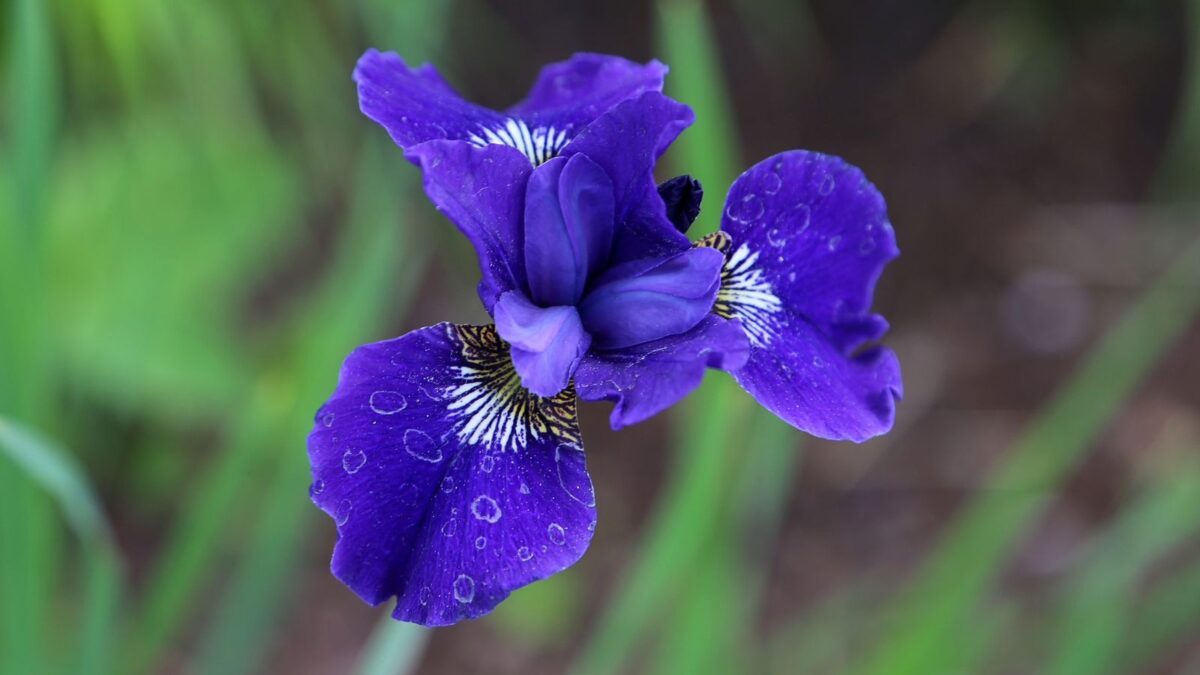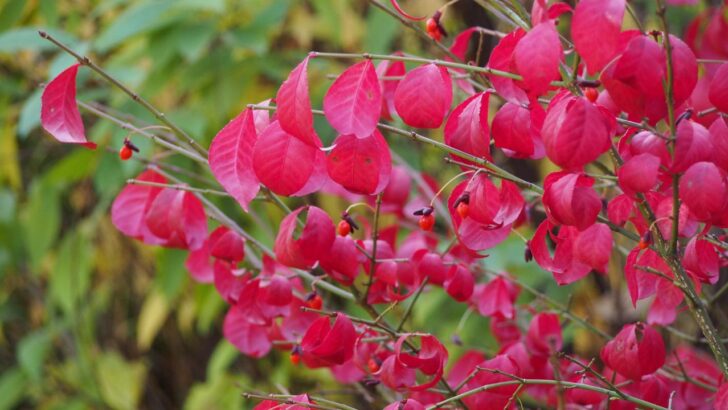Invasive plants are one of the most significant threats to biodiversity in parts of the country. These species proliferate and spread aggressively, competing against native plants for space, sunlight, water, and nutrients. In addition to degrading ecosystems, invasive plants can negatively affect the economy as they impact agriculture, outdoor recreation, and other sectors.
The good news is you can help! Many invasive plants began as ornamental garden specimens before escaping cultivation to become aggressive weeds. Some can still be found in our gardens and even for sale at nurseries and garden centers. The best thing you could do is learn to identify some of these pretty but destructive plants so you can help get rid of them. In their place, we suggest planting beautiful native species that nurture rather than destroy local ecosystems.
Below, we’ve compiled a list of 10 invasive plants and natives to plant instead. Note: If you identify any of the following invasive plants on your property, contact your local Extension office for advice on effectively and adequately removing them. Suggestions for similar native plant alternatives follow each invasive plant description.
Why We’ve Spotlighted These Invasive Plants and Alternatives

Image Credit: Agnieszka Kwiecień, Nova – Own work, CC BY-SA 4.0.
We’ve highlighted the invasive plants that should be on your radar based on extensive research and our own personal experience. This is also how we narrowed down the native plants we recommend you plant instead. It’s also important to note that our findings primarily focus on the New York area, and what are categorized as invasive and native plants vary among regions.
1. Yellow groove bamboo (Phyllostachys aureosulcata)

Image Credit: Shutterstock.
While many types of bamboo are invasive, yellow groove bamboo is a running bamboo, which means it spreads especially aggressively, forming dense colonies that are extremely difficult to remove. It has green culms or stems that reach 12 to 30 inches tall and two inches in diameter and is named for the yellow grooves at its internodes. Some of the lower joints may form a knee-like bend.
Plant native giant cane bamboo (Arundinaria gigantea) instead, or choose a native grass, like Indiangrass (Sorghastrum nutans).
2. Burning bush (Euonymus alatus)

Image Credit: Jean-Pol GRANDMONT – Own work, CC BY 3.0.
Burning bush is well-loved as an ornamental shrub for its crimson fall color. Its other common name, winged euonymus, comes from the corky “wings” on its stems. In contrast to the brilliant fall foliage, it has small, inconspicuous spring flowers followed by tiny red fruits. The simple, opposite, elliptical leaves may have finely serrated margins.
Native shrubs with red fall foliage include highbush blueberry (Vaccinium corymbosum) and black chokeberry (Aronia melanocarpa).
3. Chinese silver grass (Miscanthus sinensis)

Image Credit: Kakidai – Own work, CC BY-SA 3.0.
Chinese silver grass, or maiden grass, is an unfortunately common ornamental grass. It grows up to 12 feet tall with a clumping habit and flat, medium-green leaves that may be variegated. Pale, hairy terminal inflorescences persist through winter above buff-colored stems and leaves.
Good native grass alternatives include big bluestem (Andropogon gerardi) and switch grass (Panicum virgatum).
4. Garden loosestrife (Lysimachia vulgaris)

Image Credit: Michel Langeveld.
A rhizomatous perennial, garden loosestrife grows three to four feet tall and spreads rapidly. Its pubescent, ovate to lanceolate leaves grow opposite each other or in whorls of three to five on rigid upright stems. In summer, small, yellow, five-petaled flowers bloom in terminal panicles. Despite its name, garden loosestrife is in the primrose family and unrelated to purple loosestrife (Lythrum silicaria), another invasive species.
Plant native yellow wildflowers instead, such as bur marigold (Bidens aristosa) or common sneezeweed (Helenium autumnale).
5. Japanese barberry (Berberis thunbergii)

Image Credit: Alpsdake – Own work, CC BY-SA 4.0.
A dense, rounded, deciduous shrub, the Japanese barberry grows up to six feet tall and about as wide. The small, obovate to spatulate leaves grow densely along the stems in shades of green, red, or yellow, turning red or orange in fall. A single spine grows at each node on the stems. In spring, tiny yellow flowers bloom in small clusters under the branches. Oval red berries appear in fall and often persist into winter.
Replace green cultivars with Virginia rose (Rosa virginiana) and red or yellow cultivars with a similarly hued cultivar of Eastern ninebark (Physocarpus opulifolius).
6. Norway maple (Acer platanoides)

Image Credit: Robert Flogaus-Faust – Own work, CC BY 4.0.
Norway maple is a large, deciduous tree that can reach a height of 50 feet. This shade tree has a rounded, symmetrical shape and five-lobed leaves with sharp points and hairs in the axils of the veins. To differentiate from other similar maple trees, break a leaf petiole and look for milky sap. The winged seed pairs also form a straight line rather than an angle. It freely reseeds.
Native sugar maple (A. saccharum) closely resembles Norway maple and makes an excellent alternative. Basswood (Tilia americana) is also a good choice.
7. Siebold’s viburnum (Viburnum sieboldii)

Image Credit: SB_Johnny – Self-photographed, CC BY-SA 3.0.
With an open habit and stiff, erect branches, Siebold’s viburnum is sometimes grown as a small tree rather than a shrub. The glossy, oval leaves have serrated margins and pale, hairy undersides, and they turn a reddish-purple in fall. Crushed leaves emit an unpleasant odor. In spring, the shrub blooms profusely with flat clusters of tiny white flowers, which give way to red to black berries.
Smooth witherod (V. nudum) is a lovely native viburnum, and American elderberry (Sambucus canadensis) also makes a nice alternative.
8. Sweet autumn clematis (Clematis terniflora)

Image Credit: Cbaile19 – Own work, CC0.
A woody, twining vine, sweet autumn clematis grows quickly to reach heights and widths of 15 to 30 feet, smothering other plants. Three to five leaflets comprise each compound leaf, with a long petiole for bending around supports. Showy panicles of tiny, white, fragrant flowers bloom in late summer and into fall, followed by plume-like seed heads. This plant is highly poisonous.
Plant native clematis, called virgin’s bower (C. virginiana), instead, or choose another native vine, like the unique American groundnut (Apios americana).
9. Wintercreeper (Euonymus fortunei)

Image Credit: Agnieszka Kwiecień, Nova – Own work, CC BY-SA 4.0.
Wintercreeper, a cousin of the burning bush, is an evergreen groundcover in the form of a sprawling shrub or vine, and it will climb if provided with support. It has small, leathery, ovate leaves in green or variegated hues. Tiny, greenish-white flowers bloom in summer, followed by white seed capsules that split to reveal orange to red arils.
Replace wintercreeper with a native groundcover like bearberry (Arctostaphylos uva-ursi) or Allegheny spurge (Pachysandra procumbens).
10. Yellow flag iris (Iris pseudacorus)

Image Credit: Bernard DUPONT from FRANCE – Yellow Iris (Iris pseudacorus), CC BY-SA 2.0.
As its name suggests, the yellow flag iris is a bright yellow iris. This semiaquatic bulb likes wet conditions, from moist soil to water 10 inches deep. Its sword-like foliage grows up to three feet tall, and the namesake three- to four-inch flowers bloom throughout spring, with several blossoms per stem.
Plant native blue flag iris (I. versicolor) instead, or opt for a similar plant, like white turtlehead (Chelone glabra).
Once you learn how to identify invasive plants, you can help fight their destructive spread by removing any that grow in your garden. In their place, you can plant beautiful native species that attract beneficial insects and support the native ecosystem!
Stunning Native Plants for Your Garden

Image Credit: W. Bulach – Own work, CC BY-SA 4.0.
As we said, one way to eliminate invasive plants from your yard would be to exchange them with natives. As you pull the unwanted invasive plants, select a few native plants to replace them. To guide you, here is a list of 14 native plants, particularly in the New York area, to try.
To summarize, invasive plants can wreak havoc on your yard as they pose a considerable environmental threat. However, swapping them out for some native plants would be a good alternative and better protect human health as well.


